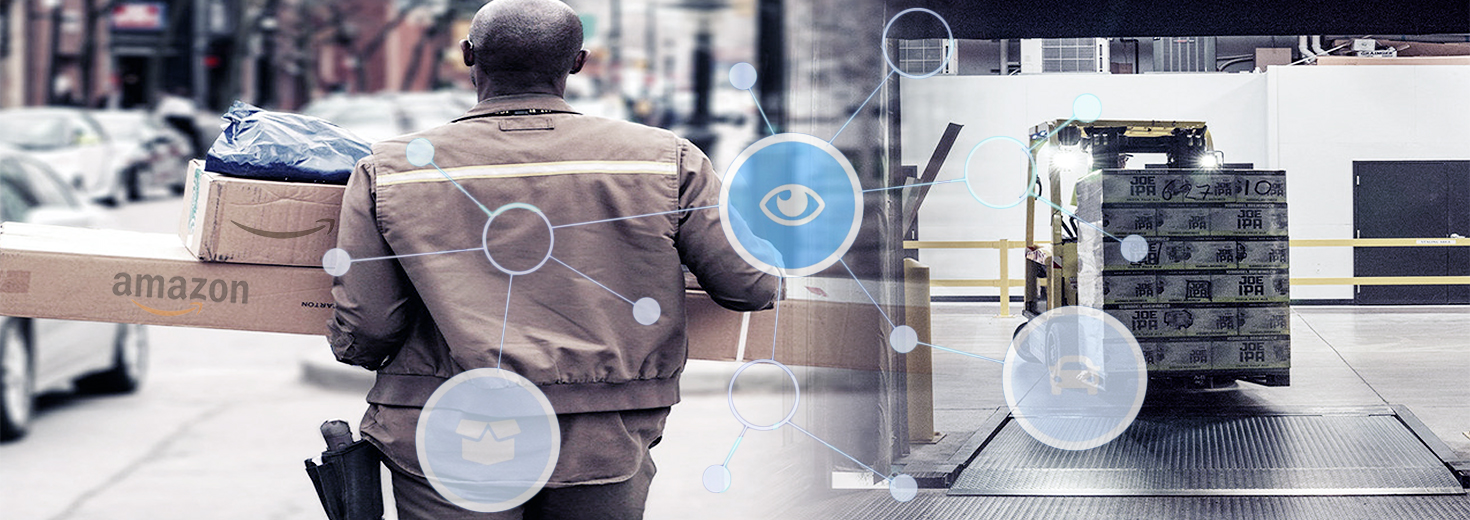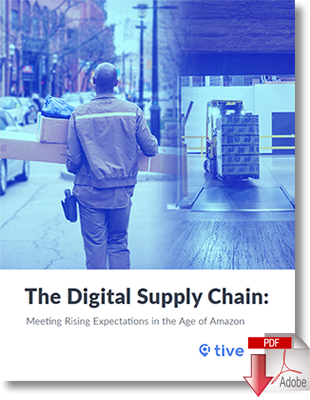Meeting Rising Supply Chain Visibility & Delivery Expectations in the Amazon Age

To keep your supply chain competitive in the modern marketplace or rather "the Amazon Age" you must first understand how consumer expectations into delivery services are evolving.
Visibility into Deliveries and Transportation Services
With the advent of Amazon, Uber, and similar services, consumer expectations for visibility into deliveries and transportation services are growing higher than ever before.
And despite the differences between consumer and industrial environments, these rising expectations are having a major spillover effect on the commercial supply chain as well.
How can the modern enterprise adapt to these heightened expectations and stay competitive in the Amazon Age?
To keep your supply chain competitive in the modern marketplace, you must first understand how expectations are evolving.
This is something we all experience every day. When you order a package from Amazon, you get to-the-minute updates, and a photo of the delivery as soon as it happens.
Amazon has upped the game in terms of visibility and made a two-day delivery standard, while consumer businesses from Dominos to Target are providing more and more speed and transparency into their deliveries.
Meanwhile, in cities all around the world, popular services like Uber and Lyft are setting a new bar for on-demand transportation.
It's a sentiment we hear all the time from customers, partners, friends, and family: if you can order a pizza for ten dollars and track it in real time from the oven to your doorstep, it seems only natural to expect a similar level of visibility into your million-dollar commercial shipments.
Greater Delivery Expectations
According to a 2016 PWC report on the future of the logistics industry, “like individual consumers, industrial customers now expect to get shipments faster, more flexible, and with more transparency at a lower price.”
As standards for efficiency and transparency rise in the consumer world, people are beginning to bring those expectations for efficient, technology-enabled delivery experiences into the professional realm.
Specifically, stakeholders in every segment of the supply chain industry are growing impatient with the outdated digital systems and lack of visibility that pervade traditional supply chain management systems.
That's why forward-thinking companies are investing in new digital solutions to provide a supply chain management experience on par with and even surpassing what has now become typical in the consumer world.
Trackers in the Rye
So what do these modern solutions look like? There are many options, but in general, companies are using new tracking technologies built on the Internet of Things (IoT) to transform their manual operations into a digital supply chain.
With cellular trackers and cloud-based monitoring software, managers can maintain real-time visibility into the location and condition of in-transit goods. This makes it possible to catch problems as soon as they occur, identify their root causes, and in some cases, fix the issue before any harm is done.
Armed with this new level of visibility, manufacturers can enjoy a smoother and less costly supply chain experience. For example, if a shipment is damaged en route, shock sensors can send an alert as soon as a shipment experiences rough handling.
This means that instead of discovering damage on arrival, the supply chain manager can take proactive action (such as ordering a replacement, rescheduling labor crews, or alerting the end customer) before it's too late. That translates to lower costs, less headache, and an all-around better experience for everyone involved.
The Tracker's Tale
Incorporating digital tools into the supply chain also enables B2B supply chain managers to take another page out of B2C's book: big data analytics. While restaurants and retailers use customer data to target advertising and design product launches, manufacturers can use supply chain data to identify issues and opportunities on a macro scale, making it possible to optimize the supply chain from end to end.
For example, if tracker data indicates that shipments often experience poor handling at certain locations, the manager can work with their carriers to develop alternate routes that avoid the problem area in the future.
This kind of data-driven analysis enables supply chain managers to adopt many of the big data tools and strategies that have become commonplace in other areas. IoT trackers provide access to new data streams, and that data is not just numbers.
Data tells a story that was previously inaccessible, highlighting areas for improvement and giving manufacturers the visibility they need to cut costs, improve quality, and ultimately, increase revenue.
To learn more about supply chain tracking and how Tive is helping manufacturers to meet and exceed rising customer expectations, download the white paper The Digital Supply Chain: Meeting Rising Expectations in the Age of Amazon.
Meeting Tomorrow’s Expectations: The Digital Supply Chain of the Future
Today’s digital supply chain is just the beginning. Customer expectations never stop rising, and so both the requirements and possibilities for the IoT-powered supply chain will also continue to expand.
As consumers grow accustomed to ever greater levels of visibility and real-time connectivity in their personal lives, those trends will make their way into the commercial sector as well.
So what can the forward-thinking manufacturer do to make sure they stay relevant and stay ahead of the game?
Step number one is to foster a culture of innovation. While the specifics will vary tremendously from company to company, there are a few strategies that are relatively universal.
- Make it explicit. The company’s top leadership needs to make it clear that innovation is a priority, and that innovative projects (including anything from a BYOD push to a digital supply chain solution) will be supported from the top down.
- Make it accountable. Consider developing an advisory board or committee that is specifically responsible for championing innovation. This can help ensure that departments are able to work together effectively since innovative projects will often rely on cooperation between multiple departments.
- Make it quantitative. It’s easy enough to talk about innovation, but as a recent McKinsey study explains, quantifying the results you hope to achieve through your various innovative projects is key to maximizing your chances of success. So write down your goals in terms of money saved, shipments delivered, or whatever metric is important for your business.
Download the White Paper The Digital Supply Chain: Meeting Rising Expectations in the Age of Amazon
Article Topics
Tive News & Resources
Maersk tackles flexibility and variability with innovation Logistics Visibility Report: 2022 Market Survey Tive raises $54 million in Series B funding Delivering Industry Best ETAs and In-Transit Data to Customers FourKites and Tive partner up for integrated transit data-focused platform Startup News: Tive secures $12 million in funding Reducing Supply Chain Complexity & Reverse Logistics with a Single-Use $29 Tracker More TiveLatest in Supply Chain
U.S. Manufacturing is Growing but Employment Not Keeping Pace The Two Most Important Factors in Last-Mile Delivery Most Companies Unprepared For Supply Chain Emergency Microsoft Unveils New AI Innovations For Warehouses Let’s Spend Five Minutes Talking About ... Malaysia Baltimore Bridge Collapse: Impact on Freight Navigating TIm Cook Says Apple Plans to Increase Investments in Vietnam More Supply Chain














